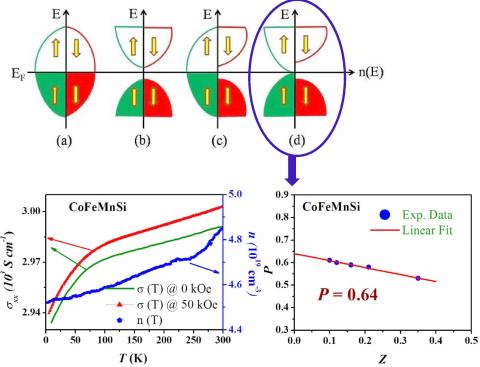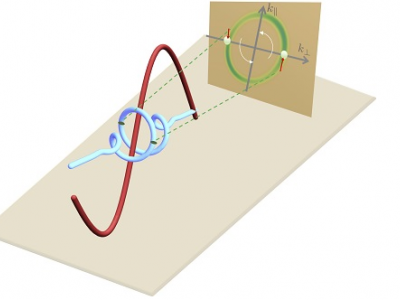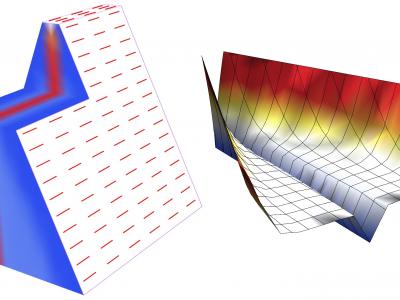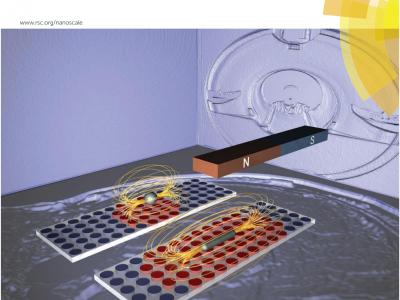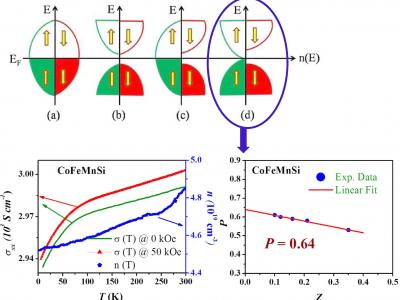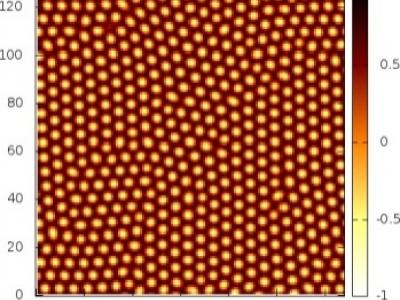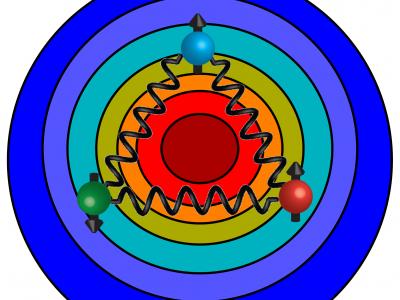A new route for spintronics
Half metallic ferromagnets (HMF) offer great opportunities in the field of spintronics. This is due to their peculiar band structure [see comparison between the density of states (DoS) of a metal, nonmagnetic semiconductor and a HMF in figures (a), (b) and (c) respectively], which gives rise to large spin polarized currents even at elevated temperatures, thereby rendering them suitable for room temperature applications. As can be seen from the figure, the Fermi level of a HMF is situated such that the DoS of spin-up (majority) carriers is non zero, while it is in the gap for the spin-down (minority) carriers. In the recent past, we have identified many such potential materials by careful experimental and theoretical investigations
A relatively new and special sub-class of HMFs is the so called spin gapless semiconductors (SGS). In these materials, the band structure (figure d) is such that the DoS for the majority carrier is ideally zero, while the scenario for the minority carriers is identical to that of HMFs. A few systems belonging to different classes of materials have been identified as SGS in the recent past. Our present work reports the discovery of two new SGS alloys, CoFeMnSi and CoFeCrGe, on the basis of complete characterization using all relevant experimental [resistivity, carrier concentration (n) and spin polarization (P), shown in the lower parts of the figure) data and theoretical calculations. The highlight of the work is the first experimental determination of electronic structure and spin polarization, which hitherto were only predicted on the basis of state of the art first principles calculations for such materials. As such both theory and experiments are complementary to each other and such a combined study is expected to guide us in the discovery of many more such materials.


